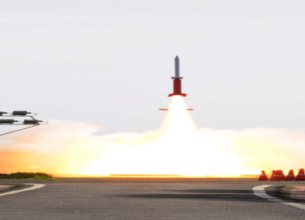CHANDRAYAAN-2’S VIKRAM LANDER HAD A HARD LANDING, SAYS NASA
28, Sep 2019

Prelims level : Science & Technology- Space Technology
Mains level : GS-III- Awareness in the fields of Space
Why in News?
- S. space agency National Aeronautics and Space Administration (NASA) has officially said moon lander Vikram had a hard-landing and that its own orbiting spacecraft Lunar Reconnaissance Orbiter (LRO) could not get clear pictures of Vikram’s crash site during its recent flyover.
Details:
- The LRO captured a 150-km-wide area in the southern lunar highlands but the pictures were not clear as it was sunset and light had faded.
- Vikram’s precise location eluded the sharp camera of the Lunar Reconnaissance Orbiter (LRO) when it last flew over the probable site on September 17.
- NASA stated that it is possible that the Vikram lander is hiding in a shadow. The lighting will be favourable when LRO passes over the site in October and once again attempts to locate and image the lander.
- This was the reconfirmation that Indian Space Research Organisation and the space community have awaited to figure out where and how the lander of the Chandrayaan-2 mission had fallen when it attempted to touch down on moon.
- LRO will next fly over the landing site on October 14 when lighting conditions will be more favourable.
- The landing region lies between two craters about 70° south of the lunar equator and about 600 km from its shadowy south pole.
- The orbiting Chandrayaan-2 and the LRO routinely fly over the same spot at regular intervals. Images from their next flyovers could help ISRO give conclusive information.
About Chandrayaan-2 Mission:
- Chandrayaan-2 was launched using a Geosynchronous Satellite Launch Vehicle Mk III (GSLV-F10).
- The spacecraft (orbiter) weighs around 3,290 kg and it will orbit around Moon and perform objectives of remote sensing the Moon.
- It has been developed indigenously by ISRO. It consists of Orbiter, Lander (Vikram) and Rover (Pragyan) In this mission, ISRO has attempted for the first time to land a rover on moon’s south pole
Lunar Reconnaissance Orbiter (LRO):
- The Lunar Reconnaissance Orbiter and Lunar Crater Observation and Sensing Satellite missions began on June 18, 2009. It is a robotic spacecraft currently orbiting the Moon.
- It studies the Moon’s surface, clicks pictures, and collects data that help in figuring out the presence and possibility of water ice and other resources on the Moon, as well as plan future missions to it.
- The primary mission of the LRO, managed by NASA’s Goddard Space Flight Center, located in Greenbelt, Maryland, was to measure the entire lunar surface to create a high-resolution 3-D map of the Moon.
- The map with ~50-centimeter resolution images would aid in the planning of future robotic and crewed missions.
- In addition, LRO would map the Polar Regions and search for the presence of water ice.
The Mission:
- The mission has provided technical innovations and made surprising discoveries that have changed our view of the Moon.
- The instruments on board the spacecraft return global data, such as day-night temperature maps, a global geodetic grid, high resolution color imaging and the moon’s UV albedo.
- It is estimated that the LRO has fuel enough to stay on its mission for at least six more years.







